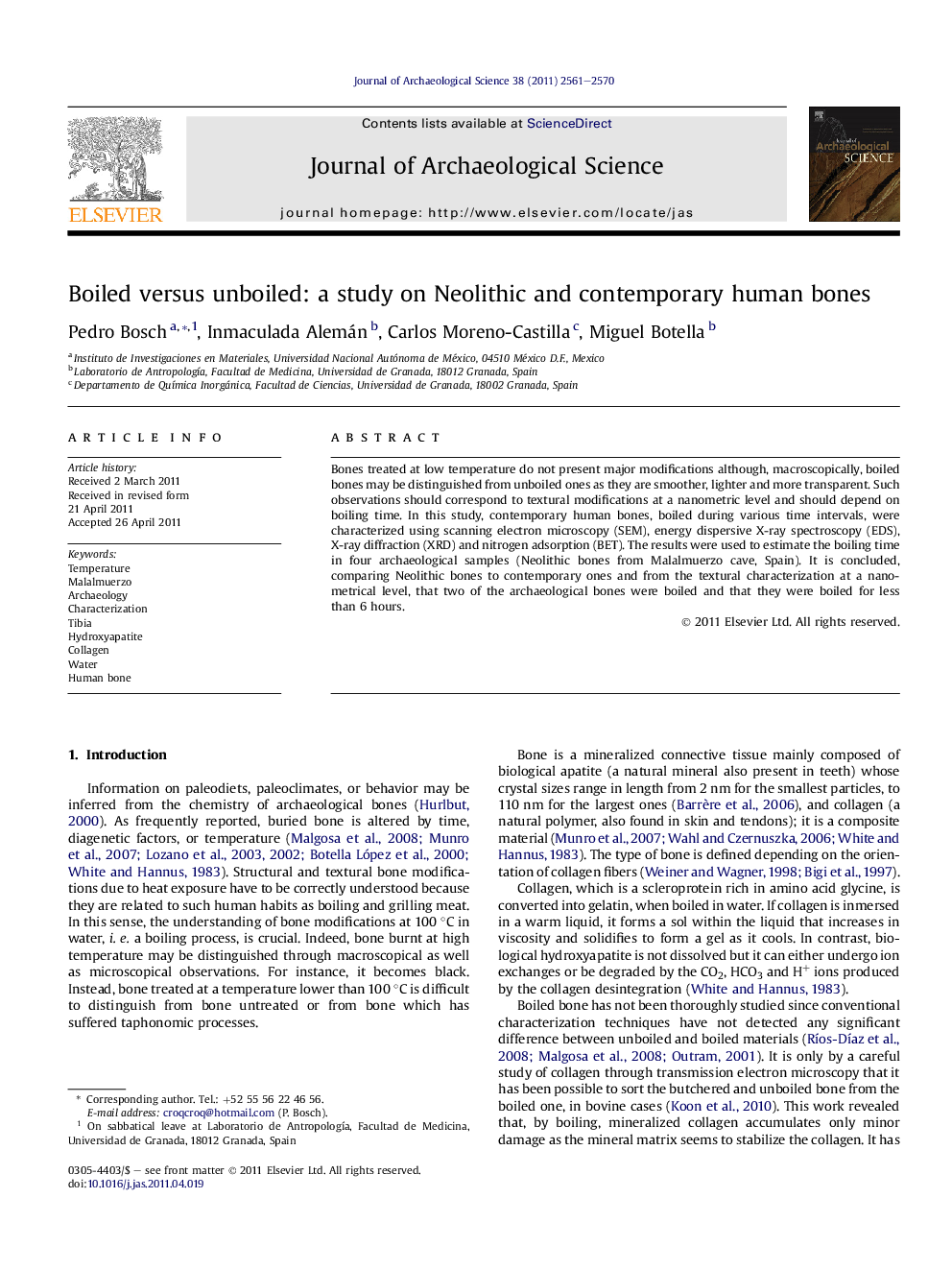| Article ID | Journal | Published Year | Pages | File Type |
|---|---|---|---|---|
| 1035706 | Journal of Archaeological Science | 2011 | 10 Pages |
Bones treated at low temperature do not present major modifications although, macroscopically, boiled bones may be distinguished from unboiled ones as they are smoother, lighter and more transparent. Such observations should correspond to textural modifications at a nanometric level and should depend on boiling time. In this study, contemporary human bones, boiled during various time intervals, were characterized using scanning electron microscopy (SEM), energy dispersive X-ray spectroscopy (EDS), X-ray diffraction (XRD) and nitrogen adsorption (BET). The results were used to estimate the boiling time in four archaeological samples (Neolithic bones from Malalmuerzo cave, Spain). It is concluded, comparing Neolithic bones to contemporary ones and from the textural characterization at a nanometrical level, that two of the archaeological bones were boiled and that they were boiled for less than 6 hours.
► The use of model experiments to understand the modifications of bones. ► Boiled bones can be differentiated from unboiled bones at a microscopical level. ► Boiling process is explained in terms of a diffusion phenomenon.
